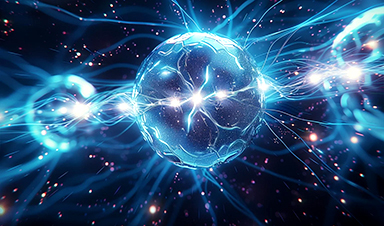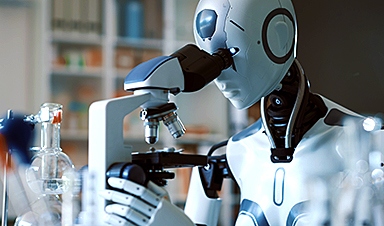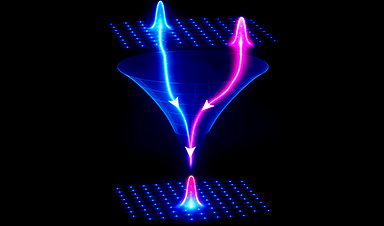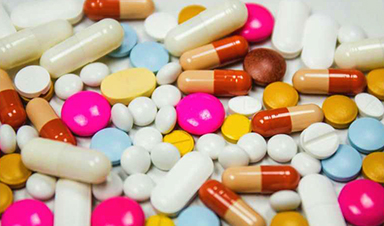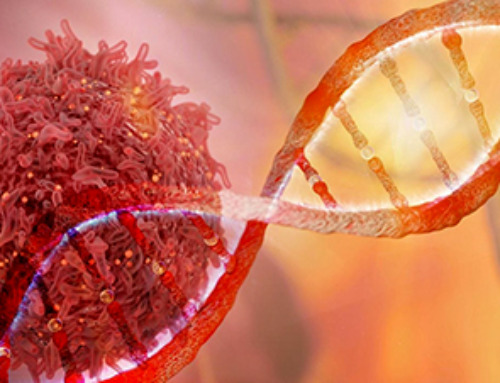MIT physicists surprised to discover electrons in pentalayer graphene can exhibit fractional charge.
New theoretical research from MIT physicists explains how it could work, suggesting that electron interactions in confined two-dimensional spaces lead to novel quantum states, independent of magnetic fields.
Groundbreaking Discovery in Graphene
MIT physicists have made significant progress in understanding how electrons can split into fractional charges. Their findings reveal the conditions that create exotic electronic states in graphene and other two-dimensional materials.
This new research builds on a recent discovery by another MIT team led by Assistant Professor Long Ju. Ju's group observed that electrons seem to carry "fractional charges" in pentalayer graphene—a structure made of five stacked graphene layers placed on a similar sheet of boron nitride.
Unveiling Fractional Charges
Ju discovered that when he sent an electric current through the pentalayer structure, the electrons seemed to pass through as fractions of their total charge, even in the absence of a magnetic field. Scientists had already shown that electrons can split into fractions under a very strong magnetic field, in what is known as the fractional quantum Hall effect. Ju's work was the first to find that this effect was possible in graphene without a magnetic field — which until recently was not expected to exhibit such an effect.
The phenemonon was coined the "fractional quantum anomalous Hall effect," and theorists have been keen to find an explanation for how fractional charge can emerge from pentalayer graphene.
Theoretical Advances and Collaboration
The new study, led by MIT professor of physics Senthil Todadri, provides a crucial piece of the answer. Through calculations of quantum mechanical interactions, he and his colleagues show that the electrons form a sort of crystal structure, the properties of which are ideal for fractions of electrons to emerge.
"This is a completely new mechanism, meaning in the decades-long history, people have never had a system go toward these kinds of fractional electron phenomena," Todadri says. "It's really exciting because it makes possible all kinds of new experiments that previously one could only dream about."
The team's study was published recently in the journal Physical Review Letters. Two other research teams — one from Johns Hopkins University, and the other from Harvard University, the University of California at Berkeley, and Lawrence Berkeley National Laboratory — have each published similar results in the same issue. The MIT team includes Zhihuan Dong PhD '24 and former postdoc Adarsh Patri.
"Fractional Phenomena"
In 2018, MIT professor of physics Pablo Jarillo-Herrero and his colleagues were the first to observe that new electronic behavior could emerge from stacking and twisting two sheets of graphene. Each layer of graphene is as thin as a single atom and structured in a chicken-wire lattice of hexagonal carbon atoms. By stacking two sheets at a very specific angle to each other, he found that the resulting interference, or moiré pattern, induced unexpected phenomena such as both superconducting and insulating properties in the same material. This "magic-angle graphene," as it was soon coined, ignited a new field known as twistronics, the study of electronic behavior in twisted, two-dimensional materials.
"Shortly after his experiments, we realized these moiré systems would be ideal platforms in general to find the kinds of conditions that enable these fractional electron phases to emerge," says Todadri, who collaborated with Jarillo-Herrero on a study that same year to show that, in theory, such twisted systems could exhibit fractional charge without a magnetic field. "We were advocating these as the best systems to look for these kinds of fractional phenomena," he says.
Surprising Experimental Results
Then, in September of 2023, Todadri hopped on a Zoom call with Ju, who was familiar with Todari's theoretical work and had kept in touch with him through Ju's own experimental work.
"He called me on a Saturday and showed me the data in which he saw these [electron] fractions in pentalayer graphene," Todadri recalls. "And that was a big surprise because it didn't play out the way we thought."
In his 2018 paper, Todadri predicted that fractional charge should emerge from a precursor phase characterized by a particular twisting of the electron wavefunction. Broadly speaking, he theorized that an electron's quantum properties should have a certain twisting, or degree to which it can be manipulated without changing its inherent structure. This winding, he predicted, should increase with the number of graphene layers added to a given moiré structure.
"For pentalayer graphene, we thought the wavefunction would wind around five times, and that would be a precursor for electron fractions," Todadri says. "But he did his experiments and discovered that it does wind around, but only once. That then raised this big question: How should we think about whatever we are seeing?"
Rethinking Electron Interactions
In their new study, Todadri and his team revisited how electron fractions could form in pentalayer graphene after their initial prediction fell short. Upon reviewing their original hypothesis, they discovered they might have overlooked a crucial factor.
"The standard strategy in the field when figuring out what's happening in any electronic system is to treat electrons as independent actors, and from that, figure out their topology, or winding," Todadri explains. "But from Long's experiments, we knew this approximation must be incorrect."
While in most materials, electrons have plenty of space to repel each other and zing about as independent agents, the particles are much more confined in two-dimensional structures such as pentalayer graphene. In such tight quarters, the team realized that electrons should also be forced to interact, behaving according to their quantum correlations in addition to their natural repulsion. When the physicists added interelectron interactions to their theory, they found it correctly predicted the winding that Ju observed for pentalayer graphene.
Once they had a theoretical prediction that matched with observations, the team could work from this prediction to identify a mechanism by which pentalayer graphene gave rise to fractional charge.
They found that the moiré arrangement of pentalayer graphene, in which each lattice-like layer of carbon atoms is arranged atop the other and on top of the boron-nitride, induces a weak electrical potential. When electrons pass through this potential, they form a sort of crystal, or a periodic formation, that confines the electrons and forces them to interact through their quantum correlations. This electron tug-of-war creates a sort of cloud of possible physical states for each electron, which interacts with every other electron cloud in the crystal, in a wavefunction, or a pattern of quantum correlations, that gives the winding that should set the stage for electrons to split into fractions of themselves.
"This crystal has a whole set of unusual properties that are different from ordinary crystals, and leads to many fascinating questions for future research," Todadri says. "For the short term, this mechanism provides the theoretical foundation for understanding the observations of fractions of electrons in pentalayer graphene and for predicting other systems with similar physics."
Reference: "Theory of Quantum Anomalous Hall Phases in Pentalayer Rhombohedral Graphene Moiré Structures" by Zhihuan Dong, Adarsh S. Patri and T. Senthil, 12 November 2024, Physical Review Letters.
DOI: 10.1103/PhysRevLett.133.206502
This work was supported, in part, by the National Science Foundation and the Simons Foundation.
News
Mystery Solved: Scientists Find Cause for Unexplained, Deadly Diseases
A study reveals that a protein called RPA is essential for maintaining chromosome stability by stimulating telomerase. New findings from the University of Wisconsin-Madison suggest that problems with a key protein that helps preserve chromosome stability [...]
Nanotech Blocks Infection and Speed Up Chronic Wound Recovery
A new nanotech-based formulation using quercetin and omega-3 fatty acids shows promise in halting bacterial biofilms and boosting skin cell repair. Scientists have developed a nanotechnology-based treatment to fight bacterial biofilms in wound infections. The [...]
Researchers propose five key questions for effective adoption of AI in clinical practice
While Artificial Intelligence (AI) can be a powerful tool that physicians can use to help diagnose their patients and has great potential to improve accuracy, efficiency and patient safety, it has its drawbacks. It [...]
Advancements and clinical translation of intelligent nanodrugs for breast cancer treatment
A comprehensive review in "Biofunct. Mater." meticulously details the most recent advancements and clinical translation of intelligent nanodrugs for breast cancer treatment. This paper presents an exhaustive overview of subtype-specific nanostrategies, the clinical benefits [...]
It’s Not “All in Your Head”: Scientists Develop Revolutionary Blood Test for Chronic Fatigue Syndrome
A 96% accurate blood test for ME/CFS could transform diagnosis and pave the way for future long COVID detection. Researchers from the University of East Anglia and Oxford Biodynamics have created a highly accurate [...]
How Far Can the Body Go? Scientists Find the Ultimate Limit of Human Endurance
Even the most elite endurance athletes can’t outrun biology. A new study finds that humans hit a metabolic ceiling at about 2.5 times their resting energy burn. When ultra-runners take on races that last [...]
World’s Rivers “Overdosing” on Human Antibiotics, Study Finds
Researchers estimate that approximately 8,500 tons of antibiotics enter river systems each year after passing through the human body and wastewater treatment processes. Rivers spanning millions of kilometers across the globe are contaminated with [...]
Yale Scientists Solve a Century-Old Brain Wave Mystery
Yale scientists traced gamma brain waves to thalamus-cortex interactions. The discovery could reveal how brain rhythms shape perception and disease. For more than a century, scientists have observed rhythmic waves of synchronized neuronal activity [...]
Can introducing peanuts early prevent allergies? Real-world data confirms it helps
New evidence from a large U.S. primary care network shows that early peanut introduction, endorsed in 2015 and 2017 guidelines, was followed by a marked decline in clinician-diagnosed peanut and overall food allergies among [...]
Nanoparticle blueprints reveal path to smarter medicines
Lipid nanoparticles (LNPs) are the delivery vehicles of modern medicine, carrying cancer drugs, gene therapies and vaccines into cells. Until recently, many scientists assumed that all LNPs followed more or less the same blueprint, [...]
How nanomedicine and AI are teaming up to tackle neurodegenerative diseases
When I first realized the scale of the challenge posed by neurodegenerative diseases, such as Alzheimer's, Parkinson's disease and amyotrophic lateral sclerosis (ALS), I felt simultaneously humbled and motivated. These disorders are not caused [...]
Self-Organizing Light Could Transform Computing and Communications
USC engineers have demonstrated a new kind of optical device that lets light organize its own route using the principles of thermodynamics. Instead of relying on switches or digital control, the light finds its own [...]
Groundbreaking New Way of Measuring Blood Pressure Could Save Thousands of Lives
A new method that improves the accuracy of interpreting blood pressure measurements taken at the ankle could be vital for individuals who are unable to have their blood pressure measured on the arm. A newly developed [...]
Scientist tackles key roadblock for AI in drug discovery
The drug development pipeline is a costly and lengthy process. Identifying high-quality "hit" compounds—those with high potency, selectivity, and favorable metabolic properties—at the earliest stages is important for reducing cost and accelerating the path [...]
Nanoplastics with environmental coatings can sneak past the skin’s defenses
Plastic is ubiquitous in the modern world, and it's notorious for taking a long time to completely break down in the environment - if it ever does. But even without breaking down completely, plastic [...]
Chernobyl scientists discover black fungus feeding on deadly radiation
It looks pretty sinister, but it might actually be incredibly helpful When reactor number four in Chernobyl exploded, it triggered the worst nuclear disaster in history, one which the surrounding area still has not [...]
